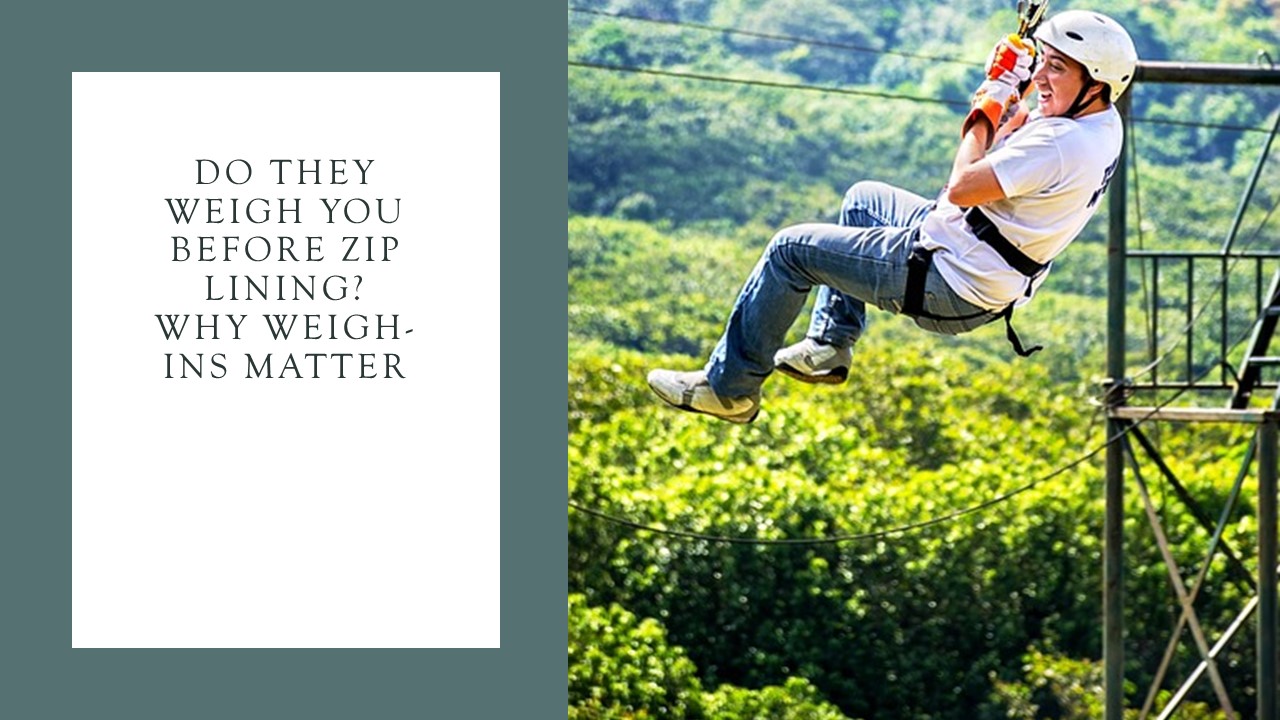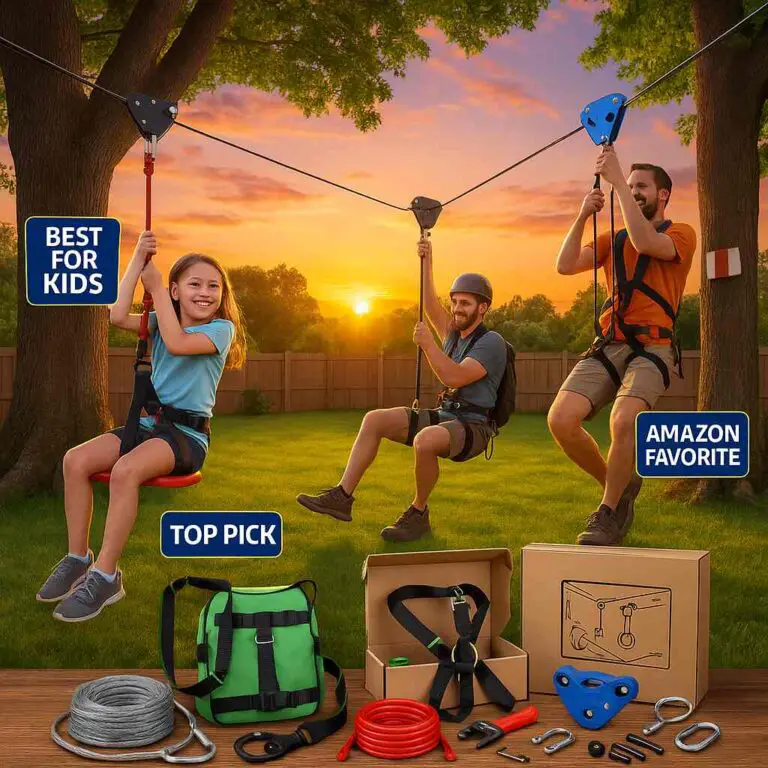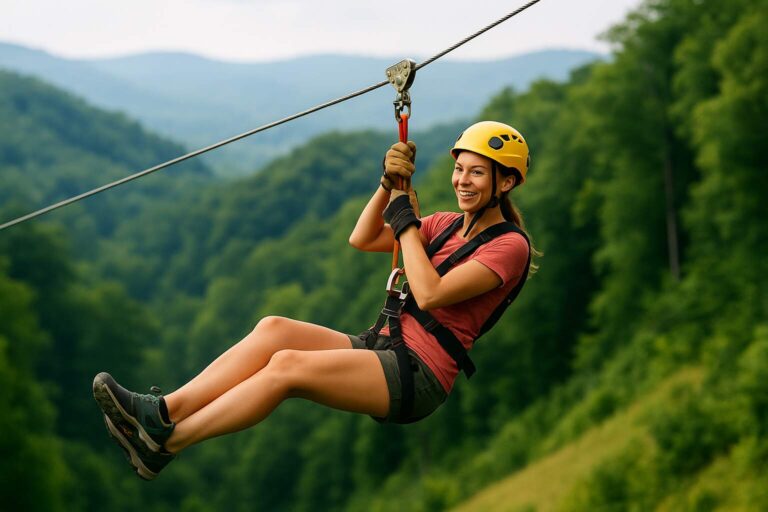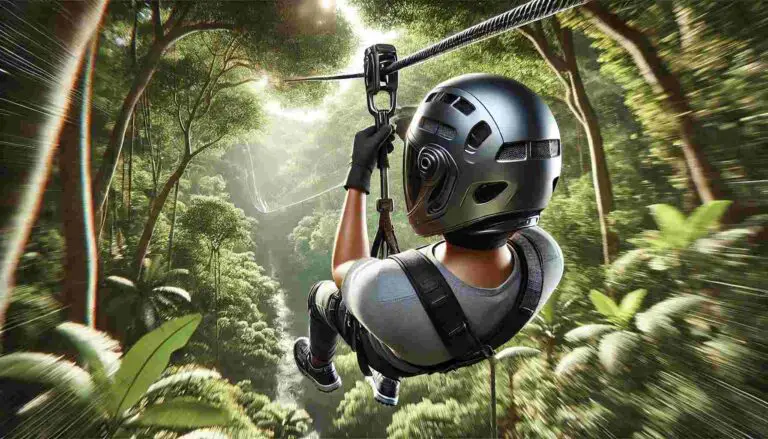Zip lining is a thrilling outdoor activity that has gained popularity in recent years. It involves sliding down a cable or rope while suspended on a harness, typically across a scenic landscape or natural terrain. However, for those who are new to zip lining or even experienced zippers, one common question that may arise is whether they weigh you before zip lining.
This is an important question to answer as it can impact both safety and enjoyment. In this article, I will explore the topic of whether or not zip line companies weigh their customers and why, and provide some tips for a successful weigh-in.
Why do some zip line companies weigh their customers?
There are several reasons why zip line companies may weigh their customers:
- Safety reasons: One of the primary reasons why zip line companies weigh their customers is for safety. Zip lines have weight limits, and exceeding these limits can put riders at risk of injury. For example, if a rider is too heavy, the cable may not be able to support their weight, which could result in the rider falling. Similarly, if a rider is too light, they may not have enough momentum to make it to the other side of the zip line.
- Proper equipment selection: The weight of a rider can impact the type of equipment that is needed for the ride. For example, the harness and ropes used for a heavier rider may need to be stronger and thicker than those used for a lighter rider. By weighing customers, zip line companies can ensure that they provide the appropriate equipment for each individual rider.
- Maximizing the zip line experience: Zip line rides are more enjoyable when riders are properly balanced. By weighing customers and grouping them according to weight, zip line companies can ensure that each group has a similar weight distribution. This helps to prevent riders from getting stuck in the middle of the line or swinging too much during the ride, which can detract from the experience.
In summary, zip line companies weigh their customers for safety reasons, to select the appropriate equipment, and to enhance the overall zip line experience.
Zip lining without weighing
There are some zip line companies that do not weigh their customers. Instead, they may use a height or age requirement to determine eligibility for the ride. However, there are both pros and cons to not being weighed before a zip line ride.
Pros:
- More accessible: Using height or age requirements instead of weight can make zip lining more accessible for a wider range of people, particularly those who may be self-conscious about their weight.
- Less time-consuming: Weighing customers can add an additional step to the zip line process, which can take time. Eliminating this step can speed up the process and allow for more rides to take place in a given time frame.
Cons:
- Safety concerns: Without weighing customers, there is a risk that some riders may exceed the weight limit, which can compromise safety. It may also be more difficult to ensure that the appropriate equipment is being used.
- Imbalanced groups: Without weight balancing, groups of riders may be imbalanced, which can impact the ride experience. For example, a group of lighter riders may swing more than a group of heavier riders.
Overall, while some zip line companies may not weigh their customers, there are potential safety and experience concerns that should be taken into consideration.
The weighing process
The weighing process for zip lining is typically straightforward and takes place before the ride. Here is what you can expect:
- Check-in: When you arrive at the zip line, you will likely need to check in and sign a waiver. This may also be the time when you pay for the ride.
- Weigh-in: After check-in, you will be directed to the weighing station. A staff member will ask you to step onto a scale while holding any loose items you have with you (such as a water bottle or phone). They will record your weight and provide you with any additional instructions.
- Equipment selection: Based on your weight, the staff will provide you with the appropriate equipment for the ride. This may include a harness, helmet, gloves, and other safety gear.
- Grouping: Once everyone has been weighed and equipped, the staff will group riders together based on weight. This helps to ensure that each group has a similar weight distribution for safety and experience purposes.
It’s important to note that the weighing process is nothing to be embarrassed about. Staff members are trained to handle the process professionally and with discretion. It’s also important to be honest about your weight, as exceeding weight limits can compromise safety for yourself and others.
Tips for a successful weigh-in
Here are 5 tips to help ensure a successful weigh-in for your zip line ride:
- Wear proper clothing: Wear comfortable clothing and closed-toe shoes that fit well. Avoid wearing heavy jewelry or bulky items that could affect your weight measurement.
- Be honest about your weight: Providing an accurate weight measurement is crucial for safety reasons. Be honest about your weight and do not attempt to deceive the staff, as this could put yourself and others at risk.
- Communicate with the staff: If you have any concerns or questions about the weighing process, don’t hesitate to ask the staff. They are there to ensure your safety and help you have a positive experience.
- Prepare mentally: If you are nervous about being weighed or have concerns about your weight, try to prepare mentally beforehand. Remember that the staff is there to help ensure your safety and provide you with the appropriate equipment for the ride.
- Follow instructions: Listen carefully to the staff’s instructions during the weighing process and follow them closely. This will help ensure that you are properly weighed and equipped for the ride.
How much do you have to weigh to go zip-lining?
The weight limit for zip lining varies depending on the specific zip line and the equipment being used. Weight limits typically range from 250 to 300 pounds (113 to 136 kg), but can be higher or lower depending on the specific ride.
It’s important to note that weight limits are put in place for safety reasons. Exceeding the weight limit can compromise the integrity of the equipment and increase the risk of injury for both the rider and others. It’s important, to be honest about your weight when being weighed before the ride, and to follow the instructions and guidelines of the staff to ensure a safe and enjoyable experience.
Conclusion
In conclusion, the question of whether or not zip-line companies weigh their customers before zip-lining is an important one to consider. While some companies may use height or age requirements instead of weight, many companies weigh customers for safety, equipment selection, and to enhance the overall ride experience.
If you are planning to go zip lining, it’s important to be prepared for the weighing process by wearing appropriate clothing, being honest about your weight, and communicating with the staff. By doing so, you can help ensure a safe and enjoyable ride.
Remember, the safety of yourself and others is of utmost importance when participating in any outdoor activity, and following the instructions of the staff is crucial. With these tips in mind, you can look forward to a thrilling and safe zip line adventure.








